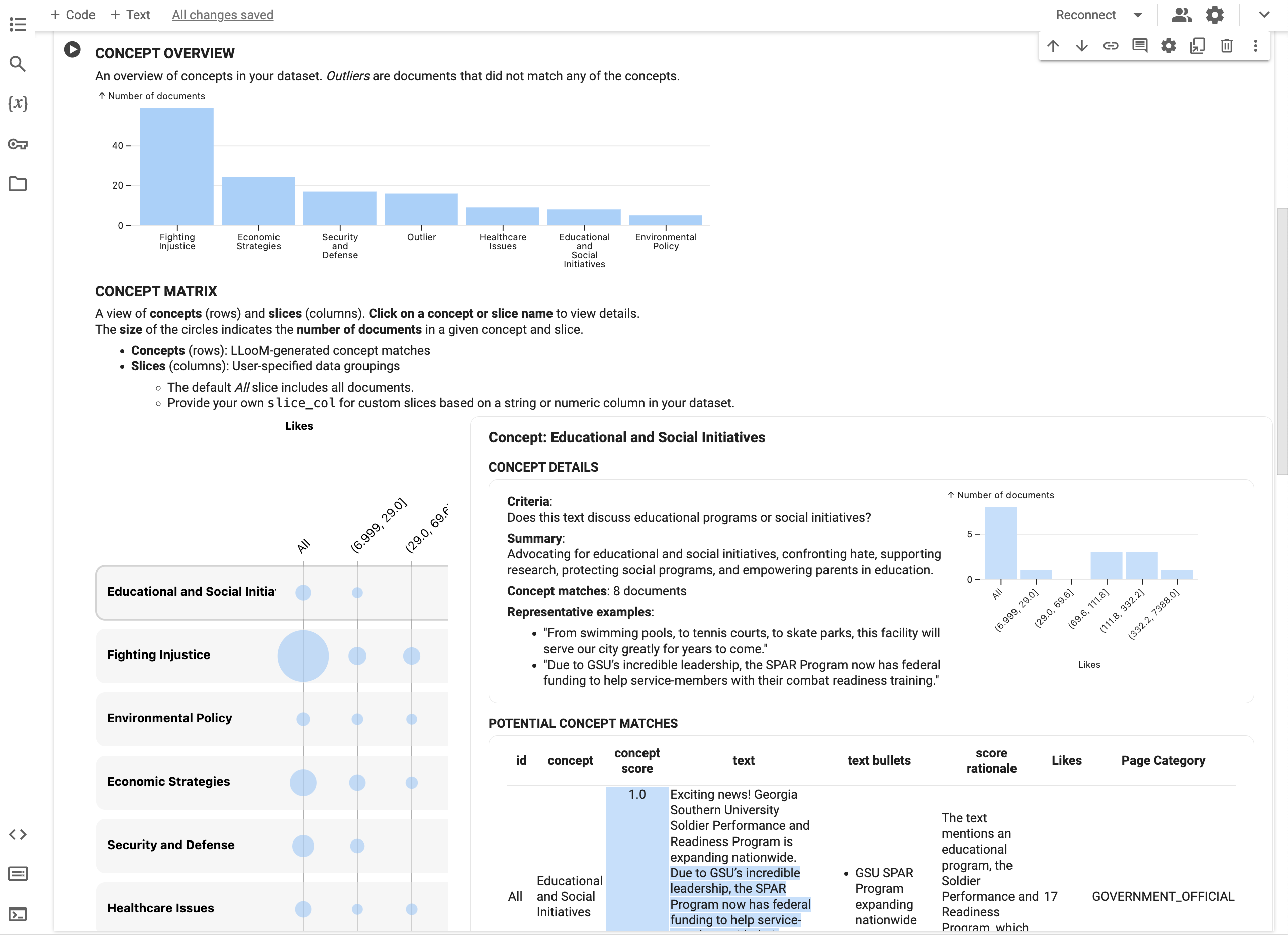LLooM Examples
LLooM can assist with a range of data analysis goals—from preliminary exploratory analysis to theory-driven confirmatory analysis. Analysts can review LLooM concepts to interpret emergent trends in the data, but they can also author concepts to actively seek out certain phenomena in the data.
Check out the examples in this section to see what LLooM can do, or visit the What is LLooM? page to learn more about the motivations and methods behind LLooM.
Political Social Media
Analysis
➡️ Try out analyzing this data with LLooM on this Colab notebook.

Task: Investigate how social media amplifies political polarization
Political polarization is a dominant concern in the United States, and it poses potential existential risks to democracy. If social media algorithms play a role in amplifying partisan animosity, how might we redesign social media algorithms to mitigate this effect? We can use LLooM to investigate political social media posts to explore whether we can detect and downrank content that amplifies partisan animosity.
Dataset: Political social media posts
We use a dataset of public Facebook posts from Jia et al.'s CSCW paper on Embedding Democratic Values into Social Media AIs via Societal Objective Functions. This dataset was generated by filtering for political posts on CrowdTangle using politics-related page categories such as “politics,” “politician,” “political organization,” and “political party.” The dataset consists of 405 posts that were randomly sampled and manually annotated for partisan animosity.
